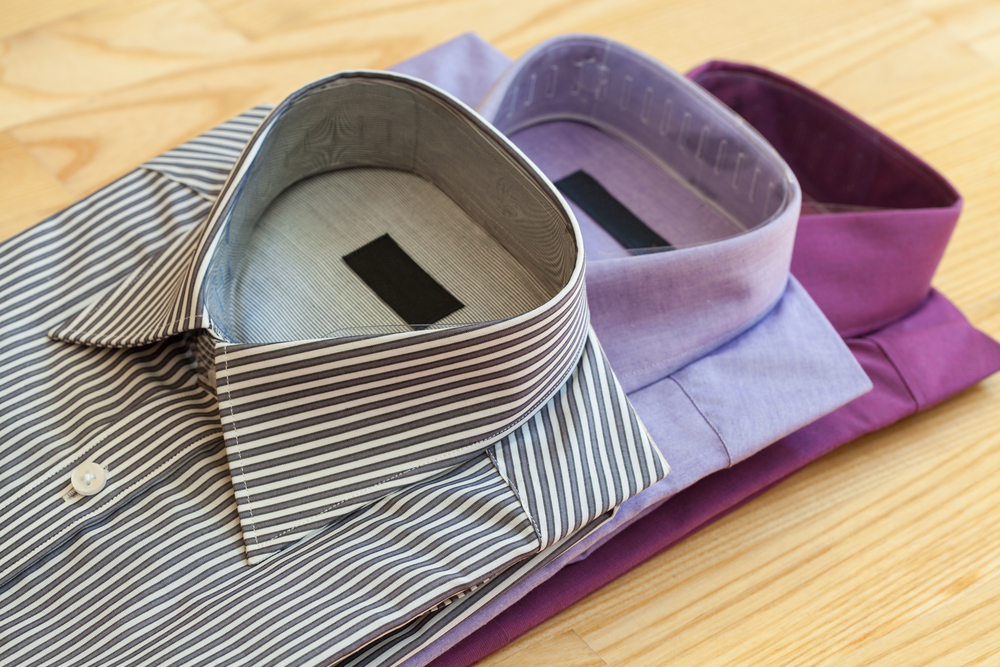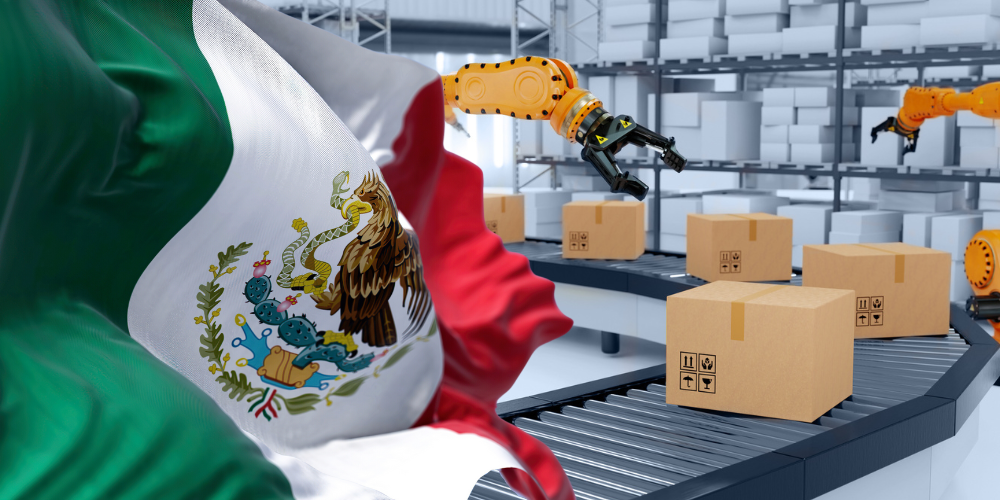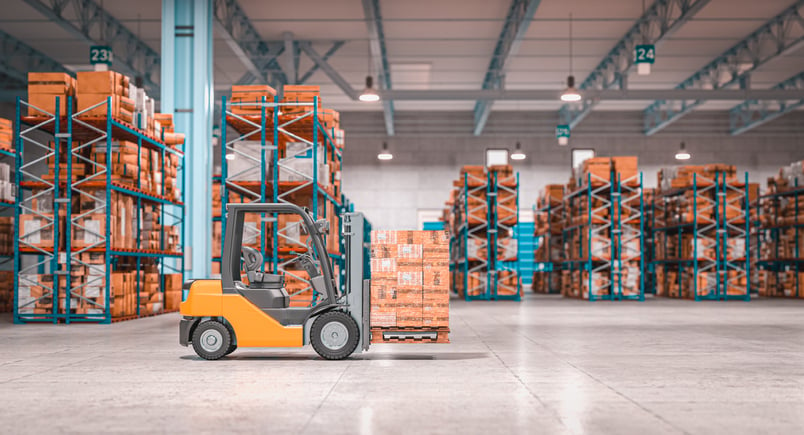Textile manufacturing stands as a massively important industry, employing millions worldwide. During the Industrial Revolution, it played a pivotal role in reshaping economies and livelihoods. In 2018, the industry alone employed over 7 million people in the United States.
The global textile market size soared to over $961 billion in 2019 and is projected to hit $1,368.6 billion by 2025, growing at a compound annual growth rate (CAGR) of 4.9% from 2020 to 2025.
These figures underscore its economic significance as a global provider of employment opportunities.
However, the industry's impact extends beyond finances. It's vital to examine its connections to economic trends, environmental responsibility, and labor practices to understand its full scope and implications.
Mexico's Textile Legacy: Spurring Growth and Reducing Poverty
Textile manufacturing is one of Mexico's oldest industries and has been a crucial sector in its economic development. The vast and diverse industry provides employment opportunities to many people, particularly in regions with a strong textile trade presence. This contributes to income generation and poverty reduction, especially in rural areas where factories are often located.
Historical Overview
Mexico has a deep-rooted history, dating back to pre-Columbian times when indigenous cultures such as the Maya and Aztec civilizations produced textiles using spinning, weaving, and dyeing techniques.
During the colonial period, Mexico's textile industry flourished, with Spanish settlers introducing new production methods and technologies.
In the 20th century, Mexico became a major player in the global market, leveraging its abundant natural resources, skilled labor force, and strategic geographic location to attract investment and drive innovation in the industry.
Current Landscape
Today, the textile sector is a vibrant and dynamic industry that covers a broad spectrum of activities within the textile industry, from yarn spinning and fabric weaving to garment manufacturing and finishing.
The country has a robust network of production hubs and clusters, with major manufacturing centers in regions like Puebla, Mexico City, Monterrey, and Guadalajara.Mexico's textile industry caters to diverse markets, including fashion, apparel, home goods, automotive, aerospace, and healthcare, meeting the demands of both domestic and international customers.
With Mexico’s manufacturing hubs thriving, it’s worth exploring what drives their ongoing strength in efficiency and workforce capability.
Robust Supplier Networks and Skilled Labor
Mexico textile manufacturers excel through strong supplier networks and skilled labor. Their close ties with local mills and yarn producers ensure consistent quality and faster turnarounds. A long tradition of craftsmanship supports Mexico textile manufacturers in balancing efficiency with artistry—making them trusted partners for global apparel and home goods brands.
The Key Roles Powering Textile Production Efficiency
In a factory, several vital roles contribute to smooth operations. These roles may vary depending on the size and specialization of the factory, but some common ones include:
- The Production Manager oversees the production process, ensuring targets are met efficiently while maintaining quality standards and safety regulations.
- Quality Control Inspectors regularly inspect materials, processes, and finished products to ensure they meet quality standards and specifications.
- Machine Operators operate various types of machinery used in production, such as looms, knitting machines, dyeing machines, and sewing machines.
- Maintenance Technician perform maintenance and repairs on machinery and equipment to ensure smooth operation.
- Supply Chain Manager manages the procurement of raw materials and supplies needed to produce and distribute finished products to customers.
- The Logistics Coordinator coordinates the movement of materials and products within the factory and transportation to and from external locations.
- The Safety Officer ensures safety protocols are followed throughout the factory to prevent accidents and injuries.
- Administrative Staff provides administrative support to various departments within the factory, such as handling paperwork and scheduling.
Beyond job functions, fair compensation and workplace conditions are vital to the sector’s growth.
Average Wages in Mexico’s Textile Manufacturing Sector
Competitive wages make Mexico textile manufacturers attractive to global buyers:
- Lower production costs: Labor rates are cost-effective compared to Asia.
- Skilled craftsmanship: Workers bring expertise in weaving, dyeing, and finishing.
- Compliance focus: Mexico textile manufacturers follow fair labor practices.
This balance of affordability and skill keeps Mexico textile manufacturers globally competitive.
What Are the Essential Steps In Textile Manufacturing?
Textile manufacturing transforms raw fibers into elegant fabrics through a meticulous multi-step process that Mexico textile manufacturers have refined over decades.
Discover the essential stages, from spinning yarn to the final quality control, that Mexico textile manufacturers follow to fabricate the textiles we use daily.
Step 1: Fibers are spun into yarn using spinning machines, converting raw materials like cotton, wool, or synthetic fibers into thread-like strands.
Step 2: Yarns are woven together on looms to create fabrics of various textures and patterns. This weaving process involves interlacing horizontal (weft) and vertical (warp) yarns to form the fabric structure.
Step 3: Fabrics are dyed to add color and enhance their aesthetic appeal. Printing processes may also apply patterns or designs to the fabric surface.
Step 4: After the dyeing process or textile printing, fabrics undergo finishing processes to improve their appearance, texture, and performance. This may include washing, bleaching, or coating treatments to achieve desired properties.
Step 5: Throughout the manufacturing process, rigorous quality control checks are conducted to ensure that the finished products meet the desired standards for strength, colorfastness, and overall quality.
Step 6: Once quality control checks are completed, the finished textiles are packaged and prepared for distribution to retailers, wholesalers, or directly to consumers.
These steps encompass the processes used to produce textile products, from transforming raw materials into yarn to producing finished fabrics ready for various applications.
Exploring Emerging Trends in Textile Design and Innovation
The textile production landscape is constantly evolving, driven by emerging trends in design and innovation. From the rise of smart textiles and wearable technology to the resurgence of traditional craftsmanship, the industry has countless opportunities for creativity and innovation.
By staying abreast of these trends and embracing new technologies, manufacturers in Mexico can stay ahead of the curve and meet the evolving demands of consumers and markets worldwide.
How is Technology Impacting Textile Manufacturing in Mexico?
Technology is reshaping the landscape of textile manufacturing in Mexico, ushering in a new era of innovation and efficiency. From addressing challenges in raw material availability to enhancing skills development for factory workers, here are five ways technology impacts the industry.
- Streamlining the procurement of textile processes for raw materials like wool and silk through automated inventory systems ensures a steady and efficient supply chain, reducing downtime and optimizing production schedules.
- Investments in state-of-the-art weaving machines, dyeing equipment, and quality control systems enable Mexican manufacturers to achieve higher precision, consistency, and productivity levels.
- Digital technologies such as computer-aided design (CAD) and 3D modeling allow for rapid prototyping and customization of products, facilitating faster product development cycles and greater design flexibility.
- Integrating Internet of Things (IoT) devices and sensors across the production line enables real-time monitoring of crucial manufacturing parameters, leading to proactive maintenance, reduced downtime, and improved product quality.
- Adopting robotics and automation technologies in tasks like material handling, sewing, and packaging enhances production efficiency, reduces labor costs, and improves workplace safety for factory workers.
As technology continues to evolve, its impact on textile manufacturing processes in Mexico will only grow stronger, driving further innovation, efficiency, and competitiveness in the industry. Embracing these technological advancements is critical to staying ahead in today's dynamic and rapidly changing market.
As these innovations reshape factories, their true impact shows up in faster delivery times and cost control.
Cost Savings and Faster Lead Times
Here’s how Mexico textile manufacturers achieve lower costs and shorter lead times:
- Proximity advantage: Nearshoring to North America cuts shipping times.
- Automation: Modern looms and digital tracking boost productivity.
- Real-time control: Integrated systems help Mexico textile manufacturers minimize delays and waste.
These strengths help brands respond faster to market demand.
What Are the Challenges in Textile Production in Mexico?
Textile production in Mexico presents a dynamic landscape, but Mexico textile manufacturers still face several challenges. Here are some of the key hurdles shaping the industry today:
- The availability of raw materials like wool and silk is crucial for uninterrupted production.
- Competition from global markets can pose challenges for local manufacturers.
- Technological advancements may be used in the manufacturing process to remain competitive.
- Skills development of factory workers in weaving, dyeing, and quality control to maintain high production standards.
- Environmental concerns related to water and energy usage, waste management, and pollution in production processes.
The Role of Government Policies in Supporting Textile Manufacturing
Government policies play a significant role in shaping the textile manufacturing industry in Mexico, influencing everything from investment decisions to labor practices and environmental standards. These policies often incentivize companies to invest in modernizing their production facilities, adopt sustainable practices, and comply with regulatory requirements.
Government support doesn’t stop at regulation—it extends into trade partnerships that open global opportunities.
How Free-Trade Agreements Benefit Textile Manufacturers in Mexico
Free-trade deals like the USMCA give Mexico textile manufacturers a significant edge. Duty-free exports, simplified customs, and regional material sourcing lower costs and attract global partners. These agreements strengthen Mexico textile manufacturers’ position as reliable suppliers within the North American supply chain.
Government Incentives for Investment and Innovation
Government policies in Mexico often include incentives to encourage investment and foster innovation in the manufacturing sector.
These incentives may take tax breaks, grants, subsidies, or low-interest loans for companies that modernize their production facilities, adopt new technologies, or conduct research and development initiatives.
Understanding and taking advantage of these government incentives can help manufacturers in Mexico stay competitive and drive growth and innovation in the industry.
Regulatory Compliance and Fair Labor Practices
Government regulations ensure fair labor practices and promote textile worker rights within the manufacturing industry.
In Mexico, labor laws govern various aspects of employment, including wages, working hours, occupational health and safety, and collective bargaining rights. Textile manufacturing companies must comply with these regulations to maintain ethical and sustainable business practices.
Implementing robust compliance programs and ensuring adherence to labor laws protects workers' rights and enhances companies' reputation and credibility in the global market.
Environmental Regulations and Sustainability Initiatives
Environmental regulations are another critical aspect of government policies that impact Mexico's industry. With growing concerns about climate change and environmental sustainability, governments are increasingly implementing regulations to mitigate the environmental impact of industrial activities, including textile production.
Manufacturers must comply with regulations related to wastewater treatment, air emissions, hazardous waste management, and resource conservation. Additionally, governments may offer incentives for adopting eco-friendly practices and investing in sustainable technologies.
By embracing environmentally responsible practices and complying with regulations, manufacturers can minimize their environmental footprint and contribute to a more sustainable future.
Government Support Programs for Textile Manufacturers
In addition to regulatory compliance, governments may also offer support programs to help textile manufacturers overcome challenges and seize opportunities for growth and development.
These programs may include funding for skills development and training initiatives, access to export promotion services, market research and market access, and support for industry associations and clusters.
By leveraging government support programs, manufacturers in Mexico can enhance their competitiveness, expand their market reach, and contribute to the overall growth and prosperity of the industry.
How Is the Future of Textile Manufacturing Shaping Up in Mexico?
The future production of textiles in Mexico is promising, with innovations in textile fibers and materials on the horizon. Adopting sustainable production practices is crucial for minimizing environmental impact. Manufacturers in Mexico play a significant role in the global supply chain, contributing to the industry's growth and expansion.
With Visigistics' advanced supply chain management solutions, manufacturers can optimize their production processes, streamline inventory management, and ensure timely delivery of goods.
For further information, contact us or visit our website.
Frequently Asked Questions:
Q: What encompasses the textile manufacturing industry?
The textile manufacturing industry is a dynamic sector that produces textiles, versatile materials crafted from natural or synthetic fibers. This industry combines tradition with innovation to create fabrics for countless applications by utilizing various techniques such as weaving, knitting, and felting.
Q: What are the various textile production processes?
Textile production is an intricate art involving several key processes, each contributing to creating diverse fabrics and textiles. It begins with spinning, where fibers are twisted into yarns, followed by weaving or knitting, where these yarns are interlaced or looped to form fabrics. The transformation continues with dyeing and printing, which imbue the fabrics with vibrant colors and patterns. Finally, finishing techniques are applied, enhancing the fabric's properties and preparing it for the market. Each process is essential in shaping the final textile product's texture, appearance, and performance.
Q: How is software used in textile manufacturing?
Software for textile manufacturing is used to manage production, inventory, orders, quality control, and other aspects of the manufacturing process to streamline operations and improve efficiency.
Q: How can someone get into the textile manufacturing business?
To get into business, one can start by gaining relevant education or experience, securing funding, understanding industry trends, and establishing connections with suppliers and clients.
Q: What are some challenges faced in the textile manufacturing industry?
Challenges include rising raw material costs, competition from overseas markets, labor issues, environmental concerns, and technological advancements impacting traditional production methods.
Q: Why is the textile industry considered a growing sector?
The industry is considered a growing sector due to increasing demand for textiles globally, advancements in technology that improve manufacturing processes, and a focus on sustainable and eco-friendly production practices.





